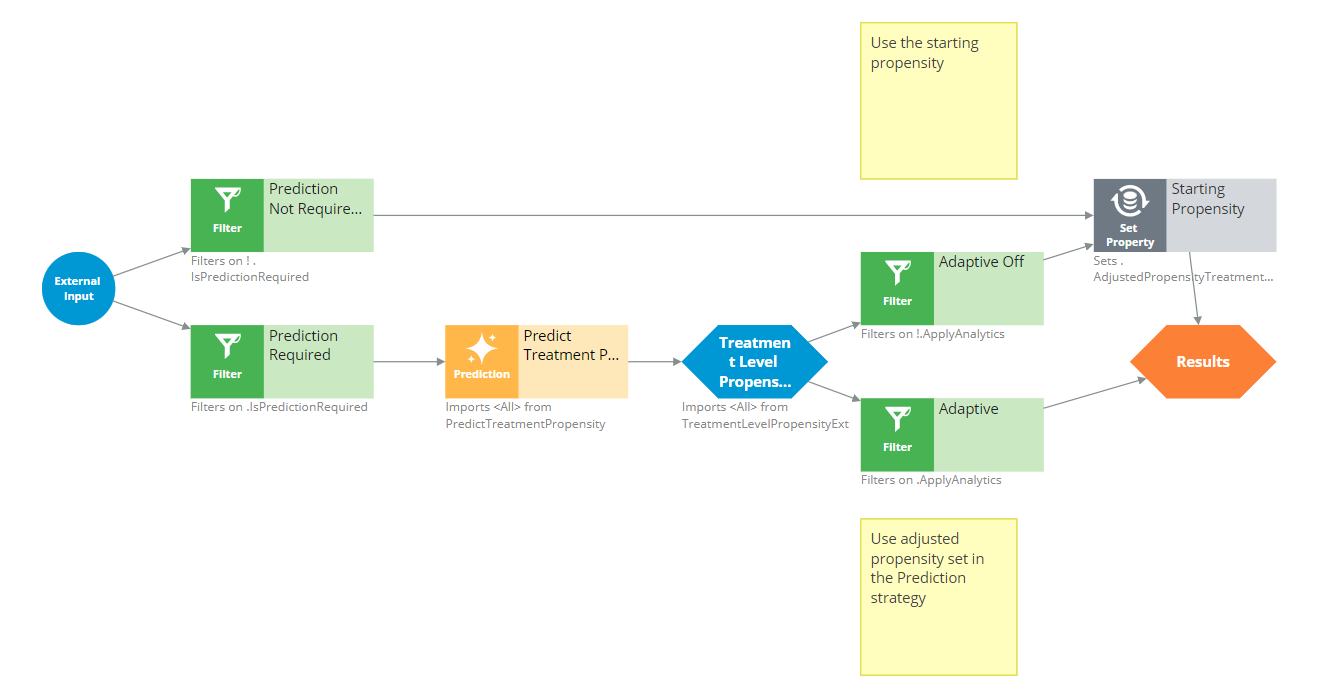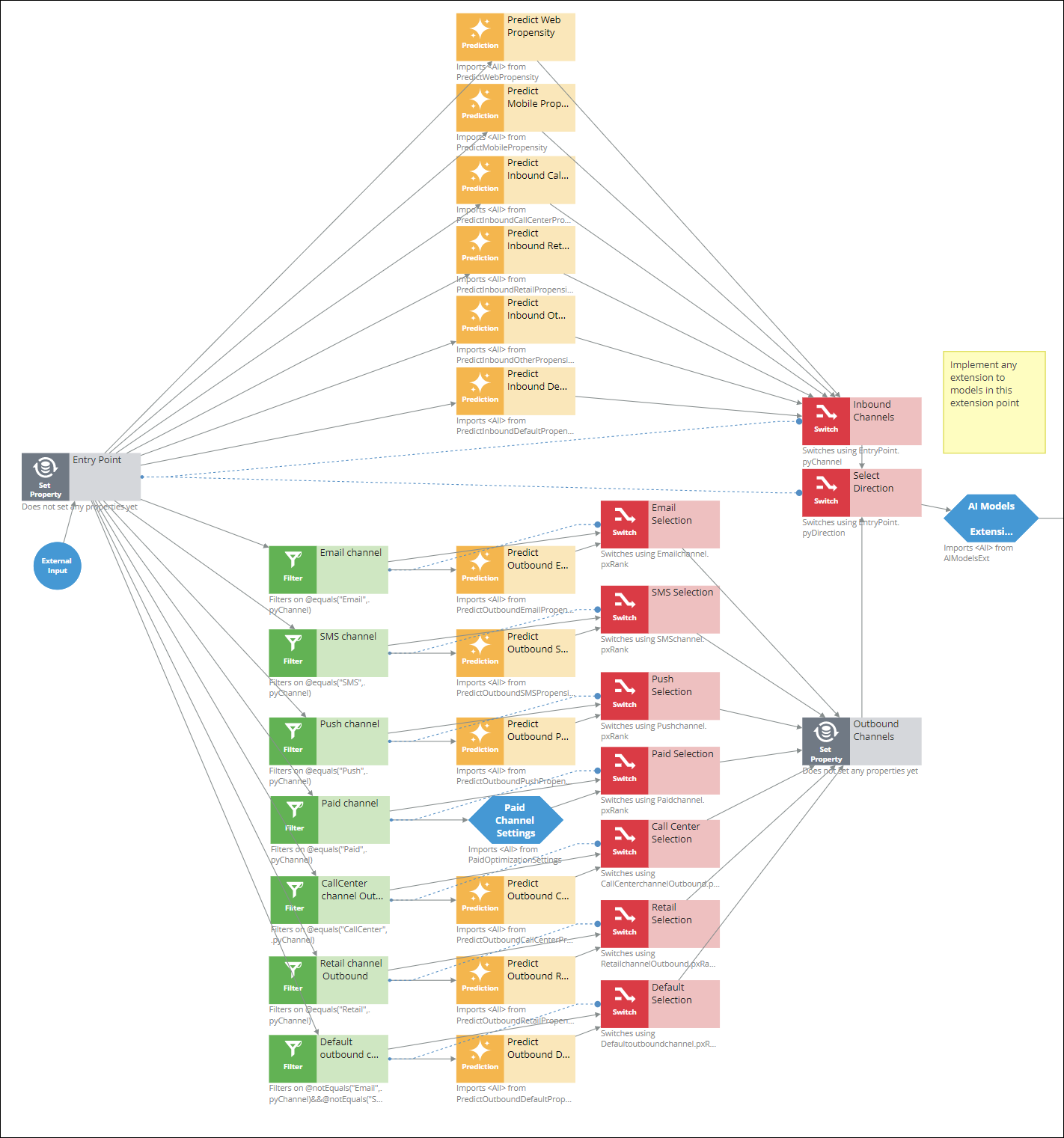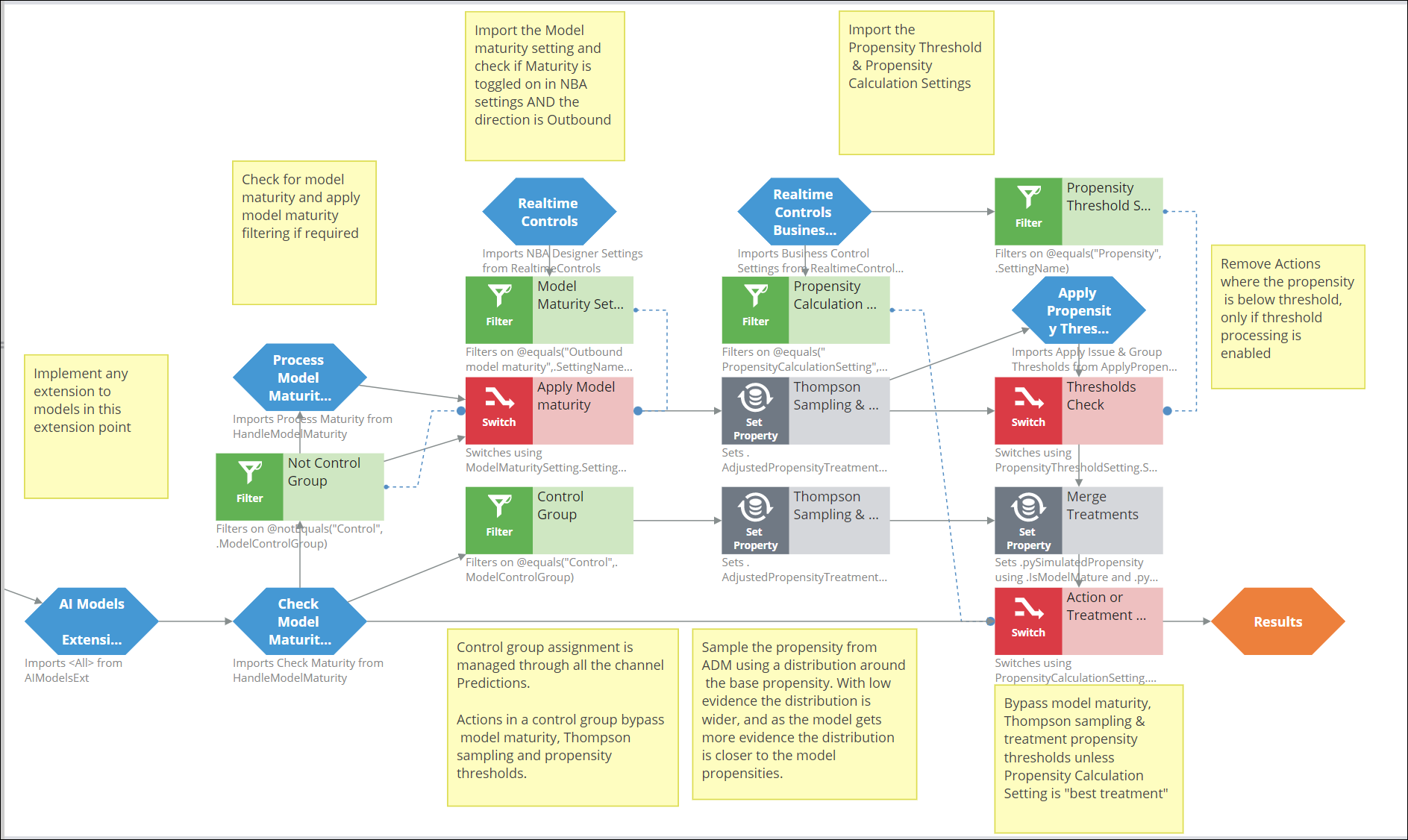Treatment-level scoring strategy
The TreatmentLevelPropensity strategy is responsible for applying an adaptive model for each treatment and calculating the propensity across eligible channels.
Transactional or Mandatory actions do not require AI to determine their propensity, and so IsPredictionRequired will be set false, otherwise it will be true.
Treatments are separated based on IsPredictionRequired, and if true, are directed to the Predict Treatment Propensity Prediction shape, and then to the Treatment Level Propensity Extension extension point sub-strategy.
Finally, the actions are divided into adaptive and adaptive-off streams based on the ApplyAnalytics action property, and the adaptive-off stream sets the propensity based on the action starting propensity, whereas for the adaptive stream these values are calculated by the Predict Treatment Propensity strategy.

Predict Treatment Propensity
The Predict Treatment Propensity prediction strategy uses the outcome optimization approach which provides a different model configuration and outcome for each channel. This strategy separates treatments based on channel to ensure that the correct model is applied. As with the action level Predict Action Propensity strategy, Random Control Group, Outbound Model Maturity, and Thompson Sampling techniques are applied to optimize statistical robustness.
The strategy is shown below split into two sections for easier viewing; the first portion separates the treatments into inbound or outbound, and then further splits them based on channel before executing the appropriate Prediction strategy for the channel. They are then merged to the AI Models Ext extension point sub-strategy for any additional processing (if required) before proceeding further.

A Switch rule selects whether inbound or outbound channels are required, and for inbound a further Switch rule selects the required channel. Remember that only one direction (inbound or outbound) is processed for any interaction, and for inbound interactions only a single channel is processed at a time, and so a Switch rule is the ideal selection mechanism for this.
Each channel except for Paid has a separate Prediction strategy assigned which sets the control group properties, calls the context level treatment model prediction for the channel, and then sets the propensity based on the control group settings. An example for the web channel is shown below (Predict Web Propensity).

The Define Control Group and Web Treatment Model Impl sub-strategies are effectively the same as their Action level equivalents already described in Predict Action Propensity prediction strategy.
The Random / Model shape sets the following two properties:.pyModelPropensity = .pyPropensity.pyPropensity =
@If(.ModelControlGroup=="Control",@random(0,1.0),.pyPropensity)
The second portion of this strategy is ostensibly the same as the right portion of its Action equivalent, i.e. the Predict Action Propensity Prediction Strategy, where the Outbound Model Maturity, Thompson Sampling and Apply Propensity Thresholds processes are applied.
Compared to the Predict Action Propensity Prediction Strategy, there is a minor difference in that this treatment processing version bypasses model maturity and Thompson sampling if the contact is in the control group.

The main differences from the action processing are:
- Bypass model maturity, Thompson sampling and action propensity thresholds unless Propensity Calculation Setting is best treatment. These processes will already have been applied in the Predict Action Propensity strategy.
- Bypass model maturity and propensity thresholds if the contact is in the control group. This is achieved within the Action or Treatment Thresholds switch in the action processing version since there is only a single control group for the contact (so a Switch rule can be used), but it needs to be done separately for each treatment since a separate control group percentage may be defined for each channel, and so a contact may be in a control group for one channel, but in the test group for another and so the Switch rule cannot be used.
- Set AdjustedPropensityTreatment to the calculated propensity and set pySimulatedPropensity and FinalPropensity.
Previous topic Inbound Channels Next topic Control Group Processing
